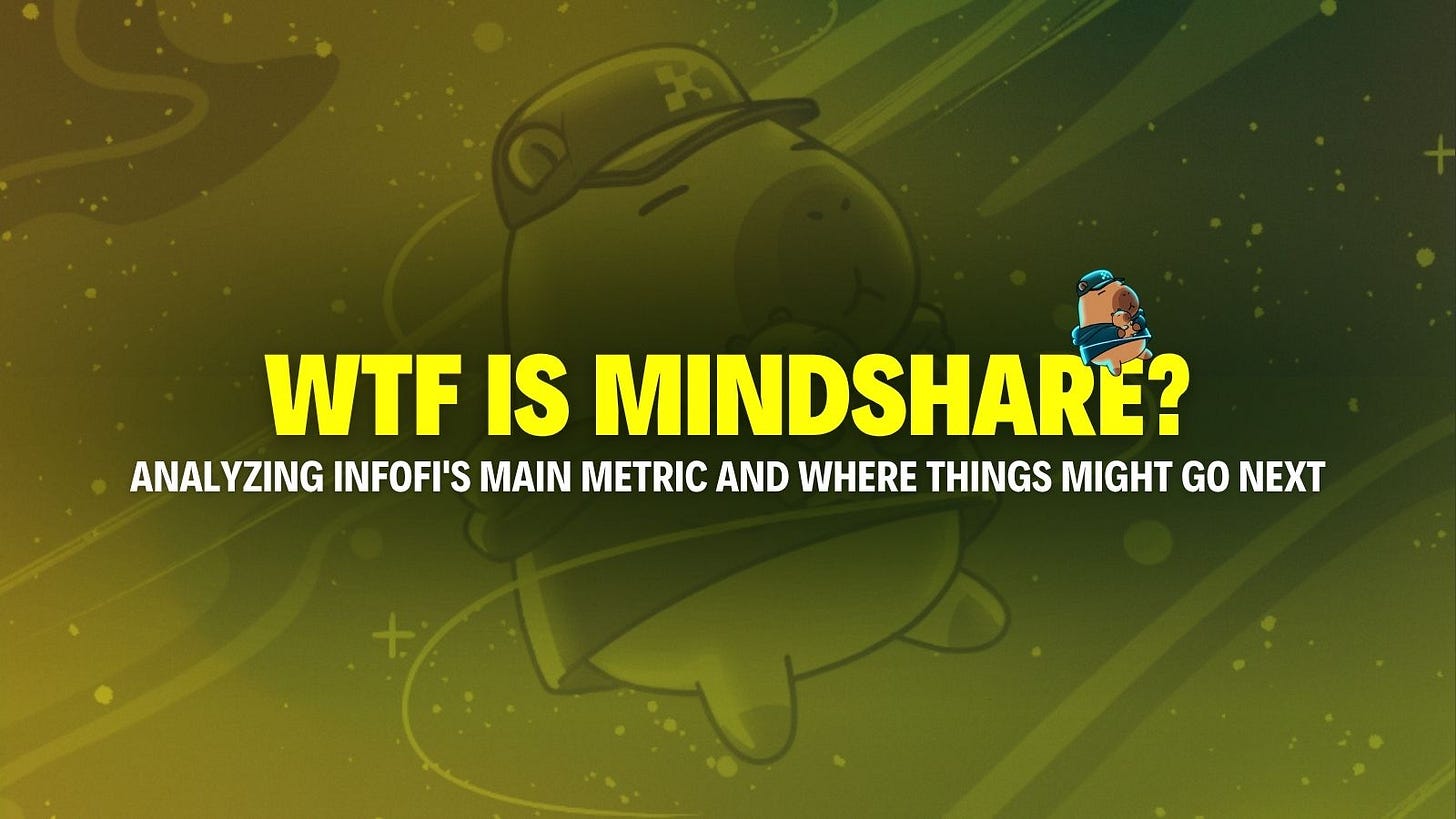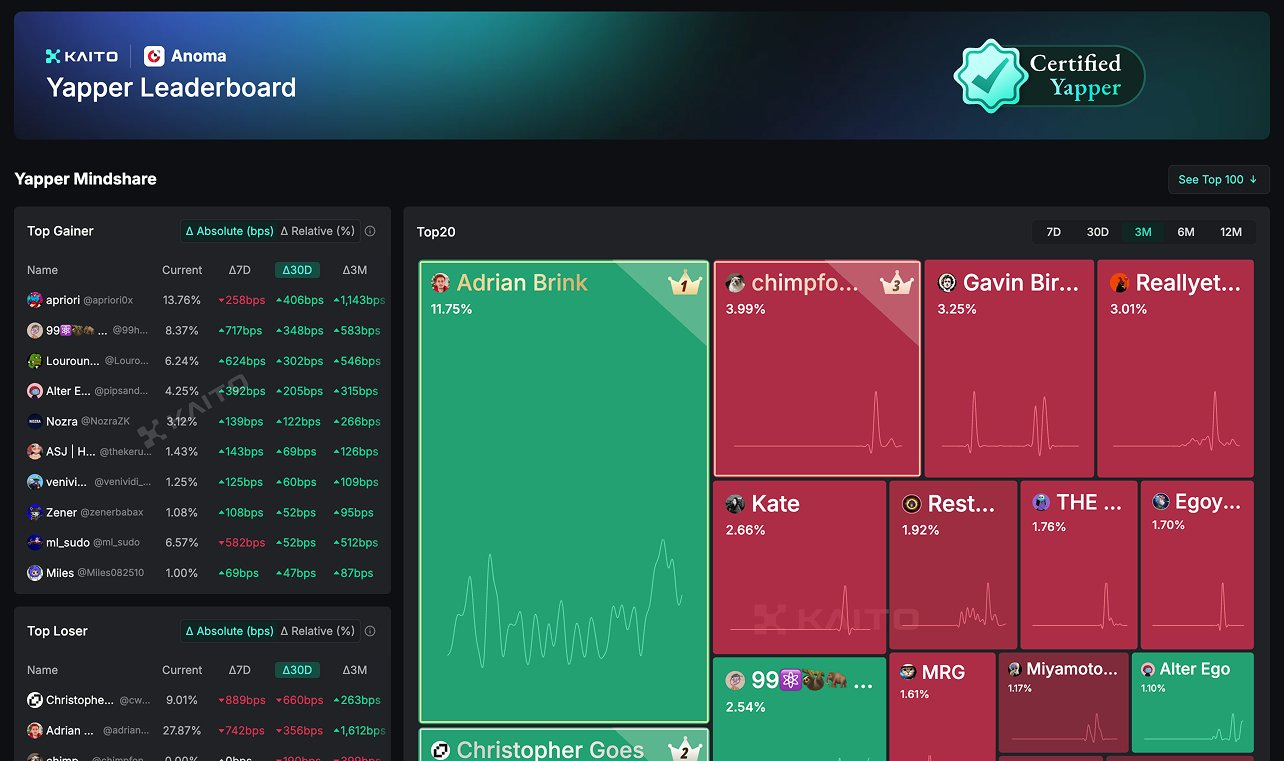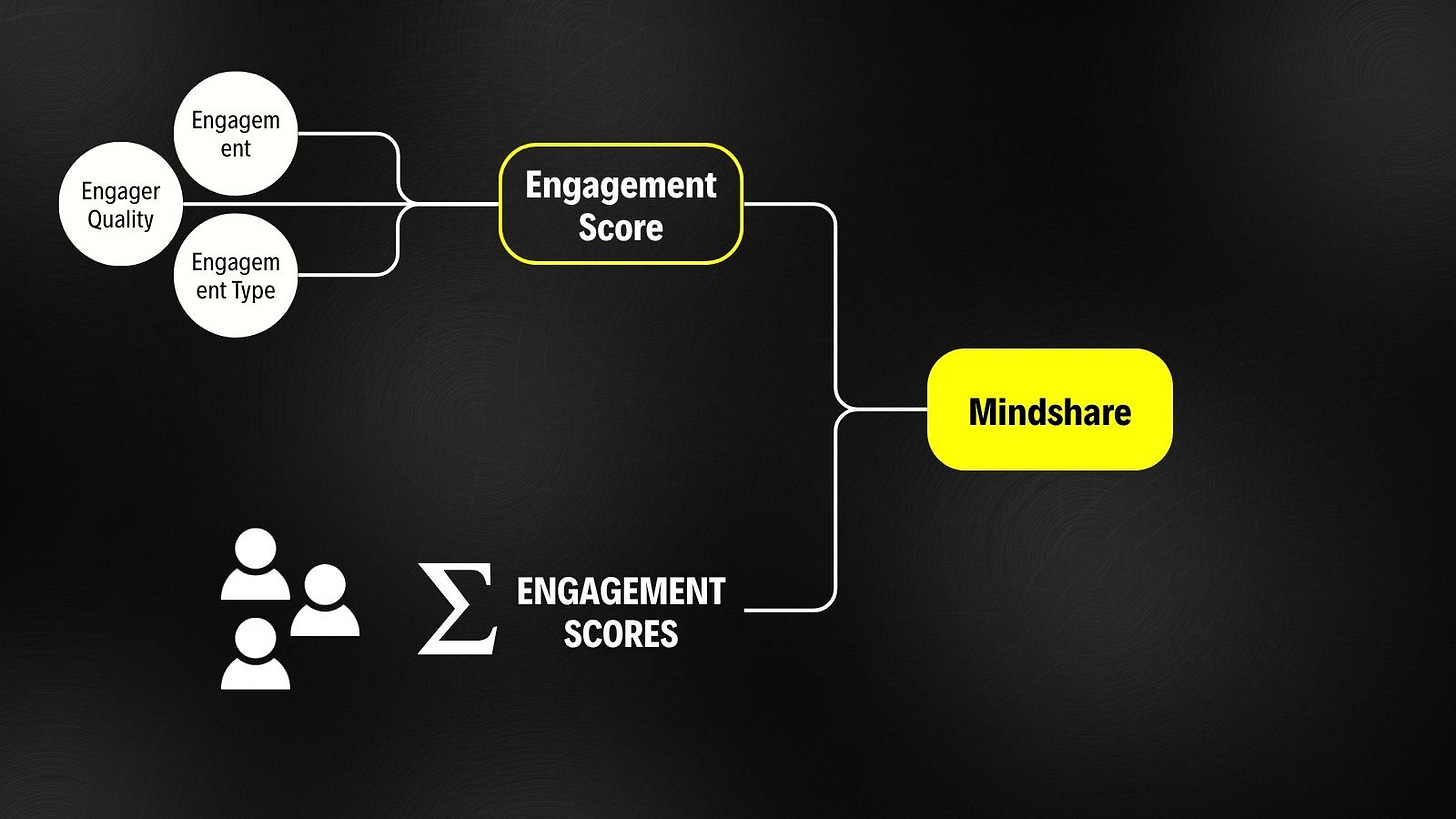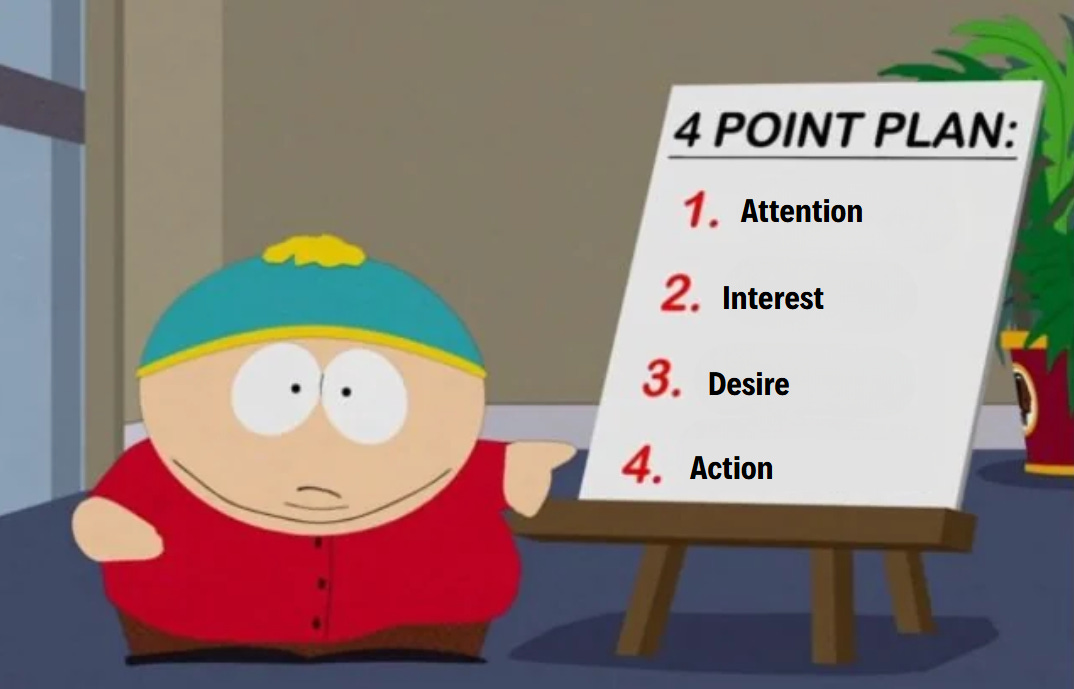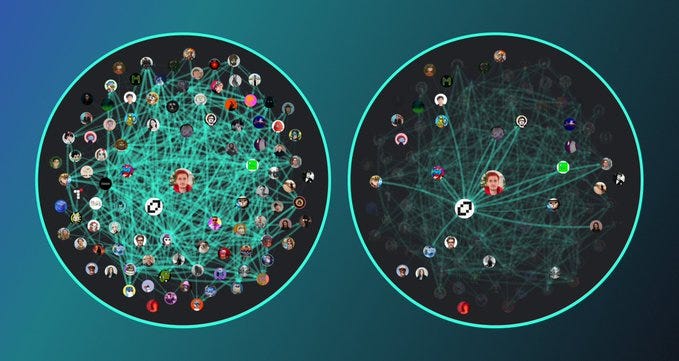WTF is Mindshare?
Analyzing InfoFi's main metric and where things might go next
whole TL is yapping
but what is CT actually yapping for? what are projects getting for their Kaito campaigns?
Or differently: what are the KPIs that incentives are distributed based on?
→ WTF is mindshare?
What is mindshare?
Mindshare is a core KPI of Kaito and therefore a major driver of behavior on CT for the last months. Mindshare maps are shared daily on X. Projects reward yappers with top mindshare on their leaderboard via token airdrops.
Why is mindshare so important?
Show me the incentives and I show you the outcome. People are optimizing for the KPI they’re given. Hence, by better understanding the KPI, what it captures and more importantly what it doesn’t (limitations):
we can explain human behavior
projects know what they’re getting - and what not
However, public details about mindshare are sparse. This helps reduce game-ability but makes our analysis more difficult.
Therefore, the next section is based on my best guess of how mindshare is calculated. I also compare mindshare to other commonly used marketing metrics and categorize it. Lastly, I mention which data points I’d be interested in as a project on Kaito and how in the future incentives may be better distributed based on created value.
Mindshare Deep Dive
My best guess is that mindshare is a hybrid metric combining impressions, engagement rate, and engager quality, giving an engagement score which is then set in relation to total engagement.
How this might work:
Absolute engagement with a post is weighted by quality scores of the users engaging with it. Different engagement types (like, comment, repost, quote repost) have their own value attached to them. Each post is valued with these quality-weighted engagement scores
The engagement score of a yapper is the sum of the engagement scores of their posts related to the project. This score is then divided by the total engagement scores across all yappers of a project to create the mindshare KPI for the project leaderboard.
To calculate a project’s mindshare, total engagement for the project is divided with total engagement across all project.
That puts mindshare in the top funnel (awareness stage). Rather than a pure engagement rate, mindshare tries to also capture the quality of engagement. By comparing it to all engagement (mindshare as a relative metric), engagement gets “normalized” by total engagement.
Trade-offs of Mindshare as a Metric
As a relative metric, mindshare cannot capture growth in engagement. A project may reach and engage more readers but if total engagement increases equally, mindshare stays consistent. Relative metrics are inherently competitive, which may be a good solution in Kaito’s case as attention is scarce, and therefore competitive. Still, projects may also want to look at absolute engagement scores to see whether these are growing and they are just underperforming the market, resulting in declining mindshare
As a hybrid metric, engagement scores should only serve as an overview KPI. For example, two projects, one reaching a small but high-quality group and another reaching a big medium-quality group may have the same engagement scores. Deeper analysis of yappers can reveal these details and break down engagement scores into reach and quality.
The same applies to impressions as a KPI, which i’ve analyzed here
Do mindshare/engagement scores help to predict the next funnel step better or do they “just” quality engagement better?
What other KPIs are interesting (the potential future of Kaito)
Enable diverse attention goals and deeper social network analysis
With a logic behind mindshare and engagement scores like explained above, a project with good mindshare may get the same people engaging with their content over and over again. Of course, users need to get in contact with a brand multiple times and be reminded regularly. However, over-exposing people to a brand is ineffective and may even have some persons build a negative attitude towards it. In that case, brands would rather reach new users. I believe Kaito could also facilitate custom attention goals like this with their data.
For example, give a higher reward for yappers who are curators vs shitposters. Or for yappers who reach new engagers (e.g. via a multiplier if an engager engages with project-related post for the first time, which slowly declines until the 5th engagement). Or give bonus rewards to a yapper that caused a new yapper cluster to post about a project, acting as a bridge between, for example, airdrop yappers and DeFi research yappers. This requires social network analysis, including metrics such as betweenness centrality (Measures how often a node lies on the shortest path between other nodes. Nodes with high betweenness control the flow of information).
Expand data and target group definition
As stated above, mindshare is a top funnel metric. Users are qualified based on their social data. Kaito may want to expand to other data points, such as onchain data. That enables projects to define more tightly what their ideal user is. For instance, projects may want to weigh engagement scores based on users’ social score and onchain wealth.
So far, onchain data has been proposed to filter out slop but the potential is even bigger
Expand to bottom funnel metrics
Reward yappers based on their performance along the funnel, from generating attention to driving revenue. This would turn Kaito into a complete affiliate platform made for crypto
Thanks for listening to me yap about marketing metrics, my web2 job prior to crypto


